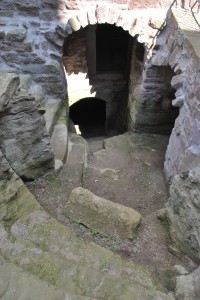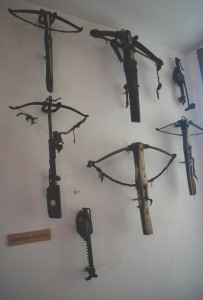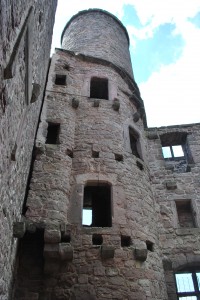What is it about the middle ages that fascinates us? Many books have been written and movies made. Whether it is about King Arthur or George Martin’s Game of Thrones, we don’t seem to get tired of reading and seeing stories of knights and maidens, ladies and squires battle life and each other in drafty castles and rat-infested huts.
Ever since I visited the ruins of Hanstein, a medieval castle in Germany, I’ve been studying everything there is to know about medieval living. Dress, food, drink, jobs, peasant and aristocratic lifestyles, knights, crests and battles.

Power and Ownership
Ah, the battles. It appears that human nature has always been combative. Never was this more apparent than during the early through late middle ages. Knights and swordsmen, archers and foot-soldiers kept going at each other with war and death a constant
companion. Why? Because lords, earls and dukes, landgraves and various clergy fought for power and money. (Has anything changed?) Villages and their peasants were owned by the rich and fought over, sold and borrowed against. So were the forests and their game, every fruit tree and most life stock.

A Taste of Everyday Life
While the have-nots worked just to stay alive, the haves feasted and gorged themselves on meat and white bread, imported wine and met. But even for the rich, life was hard. Their castles and manors were cold and drafty, their diets made them sick. Lice and other vermin were a fact of daily life, hygiene non-existent. They had no buttons and women wore no underwear. The fastest communication happened via horse and courier.
Peasants were serfs, no matter who they worked for. The lived poor and in miserable shacks, eating gruel, rye and buckwheat bread, a few root vegetables and the occasional egg. It they got sick, it was God’s will. If they had an accident, it was God’s will. Most died young and their children died younger.

Would We Survive?
Probably not for long. Today as we live in relative luxury, at least in the developed worlds, with running water, electricity, heat and plenty of — too much — food, we are fascinated by this era. We romanticize the knights who fought for the honor of their castles or a lady. We imagine their lives, yet we’d not make it for a week in the conditions they encountered. Not to mention that their language and dialects would sound like foreign jumble to us.

Imagine a Visit
Imagine getting an infection or disease. There is no CVS at the corner. Maybe the village has a witch or a bather. Break a leg, most likely, if you’d survive the ordeal, you’d be lame for life. Imagine dropping in at your best peasant friend’s dinner. Gruel, watered down beer and cabbage soup. Lice in your hair and rats fighting for scrap in the straw. Yumm!
Imagine yourself lucky. Your best friend is a lord and lives in a fancy castle. At his dinner table, you’ll dine on beaver, swan and assorted venison. All of it spiced with too much pepper, saffron and salt, the meat cut, cooked, mashed, colored and reshaped to the point where you’d not be able to tell what you ate. The wine puckers your mouth and the beer has fifteen percent alcohol. Wait a minute, you say. I’ll have water. No such luck. Water was almost never consumed since wells and rivers were polluted with human and animal waste. If people did consume water, they often got sick.
Are you still feeling romantic? I know, me too. I spent months researching this era so I could write a story about a young man who’s transported to the year 1471. I have rarely had more fun writing. As I just read on a tweet: Make your protagonist suffer. I did.

